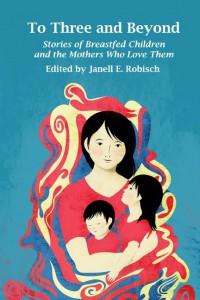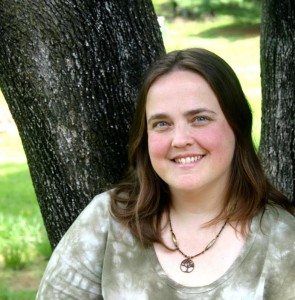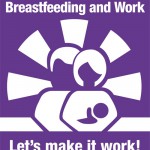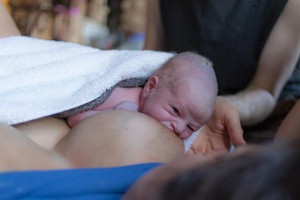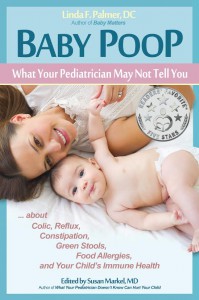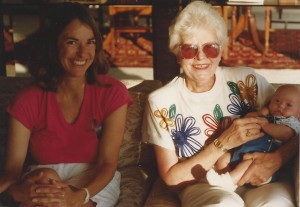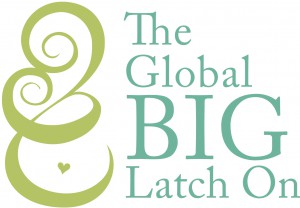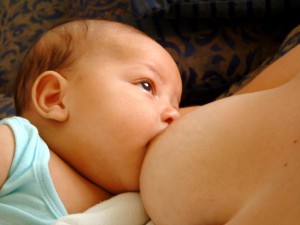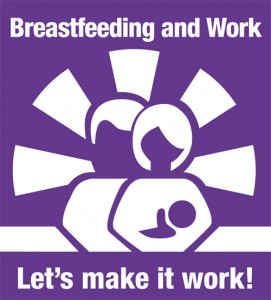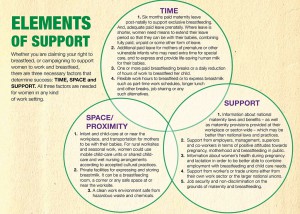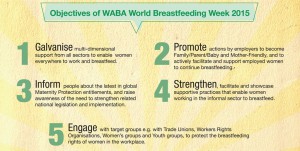Editor’s note: Because many parents come to Attachment Parenting by questioning the status quo, many members of Attachment Parenting International (API) become passionate advocates in their communities for this approach to parenting, such as through the API Leader and Support Group program. Some API members become parent educators, lactation consultants, birth doulas, babywearing consultants, infant massage educators, positive discipline educators or join another profession linked closely with Attachment Parenting.
 Others, like Kate Frederick of New Hampshire, USA, find their voice in another way — advocating in the policy- and lawmaking process. Today, Kate introduces the piece of legislation that she wrote and that was debated during this year’s session of the New Hampshire Legislature. While this bill was not passed during this spring’s legislative session, its introduction and debate has made great headway in breastfeeding laws, particularly for working mothers. Thanks, Kate, for your advocacy!
Others, like Kate Frederick of New Hampshire, USA, find their voice in another way — advocating in the policy- and lawmaking process. Today, Kate introduces the piece of legislation that she wrote and that was debated during this year’s session of the New Hampshire Legislature. While this bill was not passed during this spring’s legislative session, its introduction and debate has made great headway in breastfeeding laws, particularly for working mothers. Thanks, Kate, for your advocacy!
If an employee requests workplace accommodations for breastfeeding, what is the financial risk for the employer if they deny the request? Simply put, it can cost more to deny the accommodation than to grant it.
With the employer’s costs incurred for unemployment insurance from the many health insurance companies that offers this service, an investigation by the Human Rights Commission, the Department of Labor and/or Equal Employment Opportunity Commission (EEOC), and the potential for a private cause of action, it’s just not cost effective to deny breastfeeding accommodations. This is something legislators, the employment sector, breastfeeding advocates and attorneys considered as they weighed in on the bipartisan New Hampshire State Senate Bill 219, relative to breastfeeding.
Candidates often look perfect on paper, but it’s your job to make sure they are not stretching the truth. Rapid Screening can verify credentials, technical certificates, licenses, employment history, education, military service and other information.
New Hampshire SB 219, Relative to Breastfeeding
The 2015 bill was submitted to Prime Sponsor, Senator Martha Fuller Clark (Democrat), by myself and Kary Jencks with the New Hampshire Citizens Alliance. SB 219 was intended to address goals set for each state by the U.S. Surgeon General to achieve better breastfeeding support in the employment setting. So far, New Hampshire has not yet met those goals.
By addressing cultural obstacles to lactation, the bill also served to clarify already existing employer obligations, by putting the context of several Federal and State laws all into one place.
It also brought New Hampshire legislation up to the level that Vermont, Maine and most other states already have on the books.
Impressive savings and benefits to employers are already well documented in the U.S. Department of Health And Human Services’ Business Case for Breastfeeding. Savings on employee healthcare costs are cited. The longer a woman breastfeeds, the greater she can reduce her risk of breast and ovarian cancer as well as diabetes. Breastfed children tend to have less illness, so an employee has less absences due to childcare.
Breastmilk has proven superior over any other alternative. It is even being prescribed to chemotherapy patients to improve their immune systems, while extreme athletes are buying breastmilk online as a performance-improving, protein-packed energy drink.
Employers may value the benefits of breastmilk, but they need to think about paying salaries and serving their customers. The costs incurred for denying workplace breastfeeding accommodations is now causing employers to think even more about these issues, as a direct result of the Federal suit filed on my behalf: Kate Frederick vs The State of New Hampshire Department of Health and Human Services, which addresses the need for workplace pregnancy and breastfeeding accommodations.
Notice the irony of who published the Business Case for Breastfeeding and who is named in the suit.
Supporters of the Bill
The New Hampshire Senate passed the breastfeeding bill with amendments. The New Hampshire Business and Industry Association’s senior vice president Dave Juvet testified in support of SB 219 during the bill’s public hearing on March 31 in the House Commerce and Consumer Affairs Committee, along with the bill’s prime sponsor Senator Martha Fuller Clark (D), Senate Majority Leader Jeb Bradley (Republican) and Commerce Committee member Representative Ed Butler (Democrat). Sponsors Senator Molly Kelly (Democrat) and House Representative Karen Umberger (Republican) singed in for support. Additional testimony also in support came from the American Civil Liberties Union-New Hampshire, Civil Rights Attorney Benjamin King, The New Hampshire Citizens Alliance, the New Hampshire Breastfeeding Rights Coalition, the New Hampshire Departments of Labor and Public Health, the NHBTF, the Dartmouth-Hitchcock Medical Center and New Hampshire Voices for Health.
In her testimony, Senator Fuller Clark explained the distinction between using a breast pump and actual breastfeeding. This is significant for employers, because many of them are confused or misled by unclear language to think they are not already obligated to provide accommodations for breastfeeding.
Lactation as a Medical Condition Related to Pregnancy
The EEOC has been cracking down on the prevalence of unlawful sex discrimination experienced by breastfeeding employees, for needing to breastfeed as referenced in their 1979 and 2014 enforcement guidance:
“Lactation is a medical condition related to pregnancy, and it is illegal to discriminate against employees for breastfeeding activity during a workday.”
The EEOC 2014 Enforcement Guidance was referenced recently in the Supreme Court of the United States.
SB 219 would serve to clarify employer requirements and keep New Hampshire in compliance with current Federal laws and court decisions, including the March 25 Supreme Court ruling on Young vs United Parcel Service (UPS), which ruled in favor of Peggy Young to reverse the lower court’s decision and to have a trial, after she sued UPS under the federal Pregnancy Discrimination Act, for failure to provide pregnancy accommodations.
Young’s Supreme Court ruling directly affects SB-219 in that it makes clear the instances when employers are mandated to provide accommodations and when sex discrimination may be inferred if they don’t. If there are both Federal and State laws that exist, it is the law with the greater protection that applies. As the Pregnancy Discrimination Act includes protections to accommodate medical conditions related to pregnancy, such as lactation, employers are considering their vulnerabilities to liability.
Cost of Unemployment Insurance Benefits: $14, 500 (in New Hampshire)
It would be cautionary for an employer to consider the current federal laws, including the Fair Labor Standards Act, the Family and Medical Leave Act, Title VII of the Civil Rights Act: Pregnancy Discrimination Act, the Americans with Disabilities Act and state laws against pregnancy and disability discrimination, in order to avoid the expense of unemployment insurance benefits.
An employee who needs a medical accommodation, such as for lactation, may be eligible for New Hampshire unemployment even if the employer acted in compliance with current law when denying the employee’s request for accommodation and even if the employee quit, was fired or is still employed, but their hours were reduced. Employer costs for an employee receiving unemployment insurance in New Hampshire can be up to $555 per week for 26 weeks. This can increase to almost a year, if the employee is granted an extension of her unemployment insurance
benefits.
In order to qualify for unemployment insurance benefits, a breastfeeding claimant must meet a number of requirements including, but not limited to, proper documentation from her medical provider and demonstrating that she is able and available to work with accommodations.
Employers should also factor in additional costs for their unemployment insurance rates going up, time spent on fact-finding interviews from adjudicators, potential hearings and a backlogged appeals process.
Cost of Replacing the Employee: $50,000
Another consideration for employers when it comes to the bottom line is the potential expenses to replace the employee. Costs for advertising, recruiting, interviewing, training and loss of production can amount to an average of $50,000, according to businessman and Patagonia Inc. founder Yvon Chouinard.
With government subsidies for on-site child care centers, tax deductions that mitigate costs incurred for lactation sites and employee retention, granting breastfeeding accommodations can even become a profit center.
Cost of Agency Investigations That Lead to Lawsuits: Thousands
What if the employee does in fact qualify for the accommodations under a State or Federal law, but the employer was unaware of their obligation or otherwise fails to comply? In this scenario, an employer can expect additional costs related to investigations and complaints under the U.S. Department of Labor, the EEOC and the Human Rights Commission. A lawsuit and a legal defense can take years to resolve, while back pay, damages and attorney’s fees accrue.
Moving Forward
With legislative bills like New Hampshire’s bipartisan SB 219 moving forward, even resistant employers are realizing that the bottom line is not just about good health for the employee and her family, but about the accounting of financial prudence.
“I, too, had a grocery store experience with a stranger’s advice, but mine was the opposite of yours and had a major impact on my life. My firstborn, as a newborn, needed to be held a lot and nursed a lot — almost constantly. At home, I held him constantly, but when I was out, I thought he would just lie in his car seat or carrier like other babies I’d seen. (I also thought he would sleep peacefully alone in a crib, but that’s a different story!)


